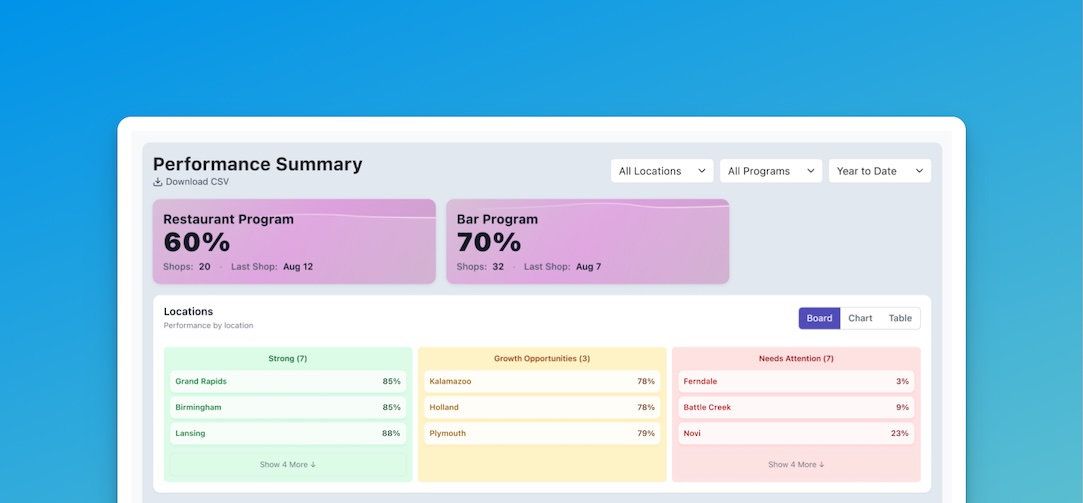
Providing a positive customer service experience is an essential part of your business. After all once people buy your products or start to use your services you want to make sure they’re happy with their purchase. But if you assume your customer support is working as it should without doing any investigation you could be losing business—or leaving money on the table—without even knowing it.
So what’s a small business owner to do?
In this article we’ll cover all the behind-the-scenes details you need to succeed. You’ll see why evaluating customer service experience is so important as well as five (or six) tried-and-true methods to help you do so. With the right data in your hands you’ll be able to monitor your customer service regularly optimize your operations and boost satisfaction. Ultimately you’ll see improvements across the board—including customer loyalty and profitability. So let’s get started!
Customer Service Experience Is the Backbone of Your Business
You’re living the dream. Your small business is making sales—and people are loving your offerings. But don’t get too comfortable yet. No matter what products or services you offer your customers are going to need support at some point. And if they can’t get the help they need it’s a big problem.
That’s why curating a positive customer service experience is so critical. People reach out for support for a variety of reasons—not just to return items or complain. Here’s a quick breakdown of who typically contacts customer service:
- New Customers Looking for Information: Sometimes folks who haven’t made a purchase yet (but are considering it) will call or inquire about certain details. You want to give them reassurance fast answers and a good first impression to improve your chances of making a sale.
- Loyal Repeat Customers: Your regulars might need help with product recommendations tracking an order or giving feedback on a past purchase. They expect personalized assistance as well as to feel recognized or appreciated.
- Frustrated or Confused Customers: Something has gone wrong—whether it’s a late delivery a missing part or a confusing checkout. It happens. These customers are usually looking to file a complaint request a refund or exchange or for you to “make it right.” Deescalation clear communication and a fast yet empathetic resolution are key in this scenario.
- Tech-Challenged Customers: Not everyone is super comfortable online—but they’re still your valued customers. Provide help for folks who are struggling with your digital portals completing a purchase or using your product or service. Keep patience a priority here.
When these people get the help they need they’re more likely to trust your business become a repeat customer and recommend you to friends and family.
5 Useful Ways to Measure Customer Service Experience
So how do you know whether your customer service experience is positive? Sure you can ask support representatives to keep track of how many issues were resolved in a day or whether there were any major disasters. But that can only tell you so much about the level of success this department is achieving.
To make strategic decisions about your customer service you need hard data—both qualitative and quantitative. There are a number of reliable methodologies for getting the download on this department so let’s examine some of the top contenders.
1 - Customer Satisfaction (CSAT) Surveys
Obviously an easy way to find out how people feel about your customer service experience is to ask them. This is easy enough to do and plenty of customers will oblige to give their interaction with your business a quick rating on a one-to-five scale. It’s quick easy and provides instant data. For example when a customer calls in with a question many businesses end the interaction with a request for a rating.
If you’re a small business looking to implement a CSAT survey into your customer service program it’s best to keep it simple. Don’t overload customers with too many follow-up questions or they’ll feel put out—and you won’t get as much data.
2 - Social Listening & Online Reviews
To take the next step many businesses employ social listening to gauge the success of their customer service experience. Monitoring online reviews and comments can be a great way to gain insight into how people feel about your business. Positive reviews will highlight shining moments of success while negative reviews can flag pain points that need addressing.
Remember that online reviews are often skewed toward extreme experiences. Customers with moderate satisfaction levels aren’t usually motivated to go the extra mile—so don’t treat this as a deciding factor.
Also understand that customer support is a big deal especially when it comes to potential customers seeking recommendations. Your online community is very important to your business’s reputation. Don’t just read their reviews—respond to them! Your reaction is part of the customer experience too.
3 - Response & Resolution Data
Modern consumers expect speedy interactions from businesses big and small. Thus one way to assess success in your customer service experience is to use the data you already have. For example track how long it takes on average for someone to respond to an inquiry or for a chatbot to fully resolve a customer issue. These data points are likely already stored in your company records. Sorting through them on a regular basis can give you some great benchmarks to track.
Alternatively measure first contact resolution (FCR) rates. How often does your team solve a customer’s problem the first time they contact you? A high FCR rate means that your team is knowledgeable your processes are working well and customers don’t have to chase down answers. Overall this typically means you have a great customer support experience.
4 - Mystery Shopping for Customer Service Experience
While asking customers about their own satisfaction levels is a good place to start studies show that the data from such methodologies isn’t always the most reliable. That’s because customers tend to remember only how they feel about an interaction not the specific details. Plus those who choose to answer a survey are a self-selecting crowd—not a truly representative sample.
Furthermore they may alter their feedback to suit their social needs. For example they may not say exactly how dissatisfied they are in order to be nice and “save face” for a customer service representative. On the other hand if they’re already having a bad day this may color their entire memory of the experience and cause them to be overly critical of every less-than-perfect detail.
To balance this out many companies rely on professional customer experience evaluators—also known as mystery shoppers—to provide more reliable data about their operations. Skilled shoppers know what information will be valuable to the businesses and they can give actionable suggestions for improvement.
You can even create a customized mystery shop scenario that will test specific elements of the customer experience to target key issues you’re working on. Plus it’s easier than many small business owners think—especially when you use a program like CustomerOptix’s CX On Demand. The evaluator’s reports represent an objective perspective on your customer service experience and break down the details so you can make strategic changes.
5 - Employee Feedback
The last—but not least—source of feedback you can mine for insight on your customer service experience is easy to access: your employees. Team members especially customer service representatives can provide their own perspective on how well the department is functioning.
Plus since they’re working the front lines employees are often able to spot opportunities for improvement and even optimization. They can find trends in customer complaints and suggest solutions or request more training and support in certain areas so they can better provide service. Never underestimate the power of your team! Ask them what customers struggle with the most—and where your company can do better.
Bonus Tip: Combine Methods for the Full Customer Service Experience Picture
These five methodologies for collecting data are great on their own—but each has distinct advantages and limitations. If you want to get the best impression of your customer service experience it’s a good idea to combine methods and cover all your bases.
Of course if you’re looking to improve your customer service without burning through all your resources (including time and money) here’s the best combination:
- Customer Surveys—Qualitative authentic feedback
- Mystery Shopping—Quantitative professional data-driven insight
- Online Reputation Management—Social community-centered buzz
The great news is that you can actually get help with all of these in one place: CustomerOptix. We provide full-circle customer experience solutions—with small businesses in mind. Learn more about our platforms and get started today.
Great Business Is Built on a Solid Customer Service Experience
You don’t have to guess whether your customer service experience is as good as it could be—you just need the right tools and a thoughtful strategy. By regularly monitoring the metrics described above you won’t just be solving problems as they come up. You’ll be building a stronger more trusted business that people want to come back to again and again.
Just remember that whether you’re collecting survey responses diving into social reviews or bringing in a mystery shopper to get the inside scoop it’s best to combine methodologies to get a full picture. That way you’ll be able to fine-tune your customer service keep your team aligned and ultimately create a dream business where people love to shop.
Subscribe to the Buzz
Receive exclusive insights, tips, and customer experience strategies straight to your inbox.







